Source: israel21c.org
Green building in Israel is on the rise as architects and contractors learn to use environmentally friendly materials and techniques.
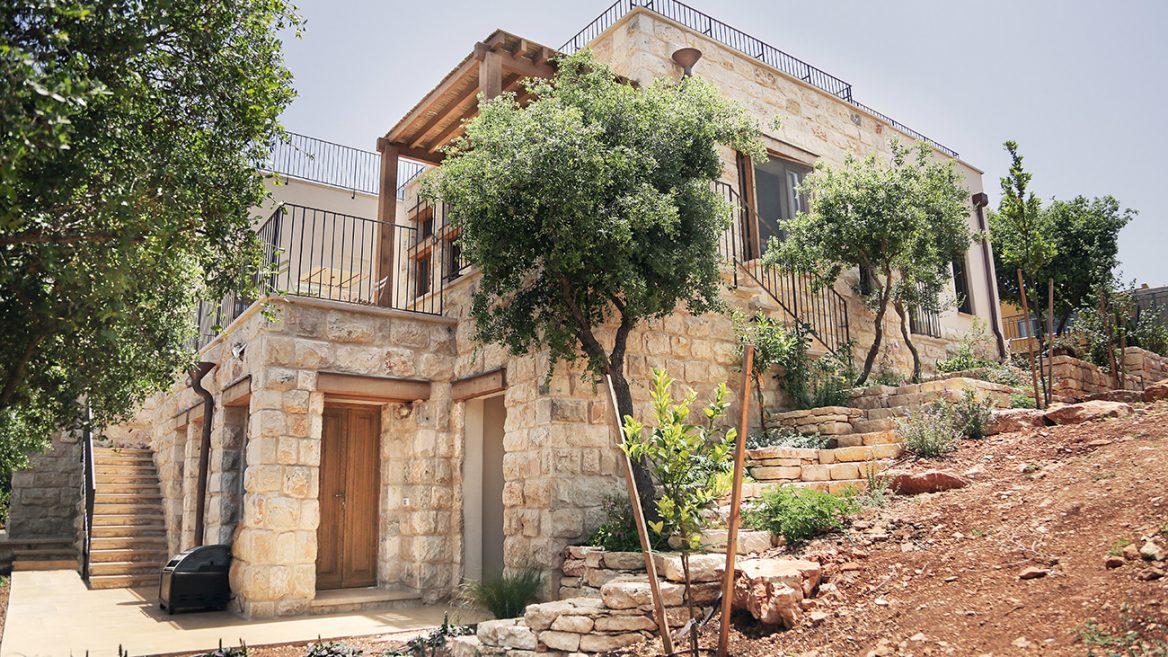
A Tav Group eco-house in northern Israel. Photo by Yaeli Gabriely
At a natural building conference in Prague this March, Israeli eco-builder and consultant Nitzan Iserovitch will share how his Back to Earth Community teaches people across the world – including earthquake victims in Nepal – to build affordable, comfortable, durable houses using rammed earth and other local natural materials.
When he’s not traveling the globe, Iserovitch sees increasing interest for Back to Earth’s natural plaster and earth construction workshops among Israelis planning private homes – or whole communities — using “green” techniques and materials.
“I’ve been doing this for 10 years and I can see the demand is increasing every year,” Iserovitch tells ISRAEL21c.
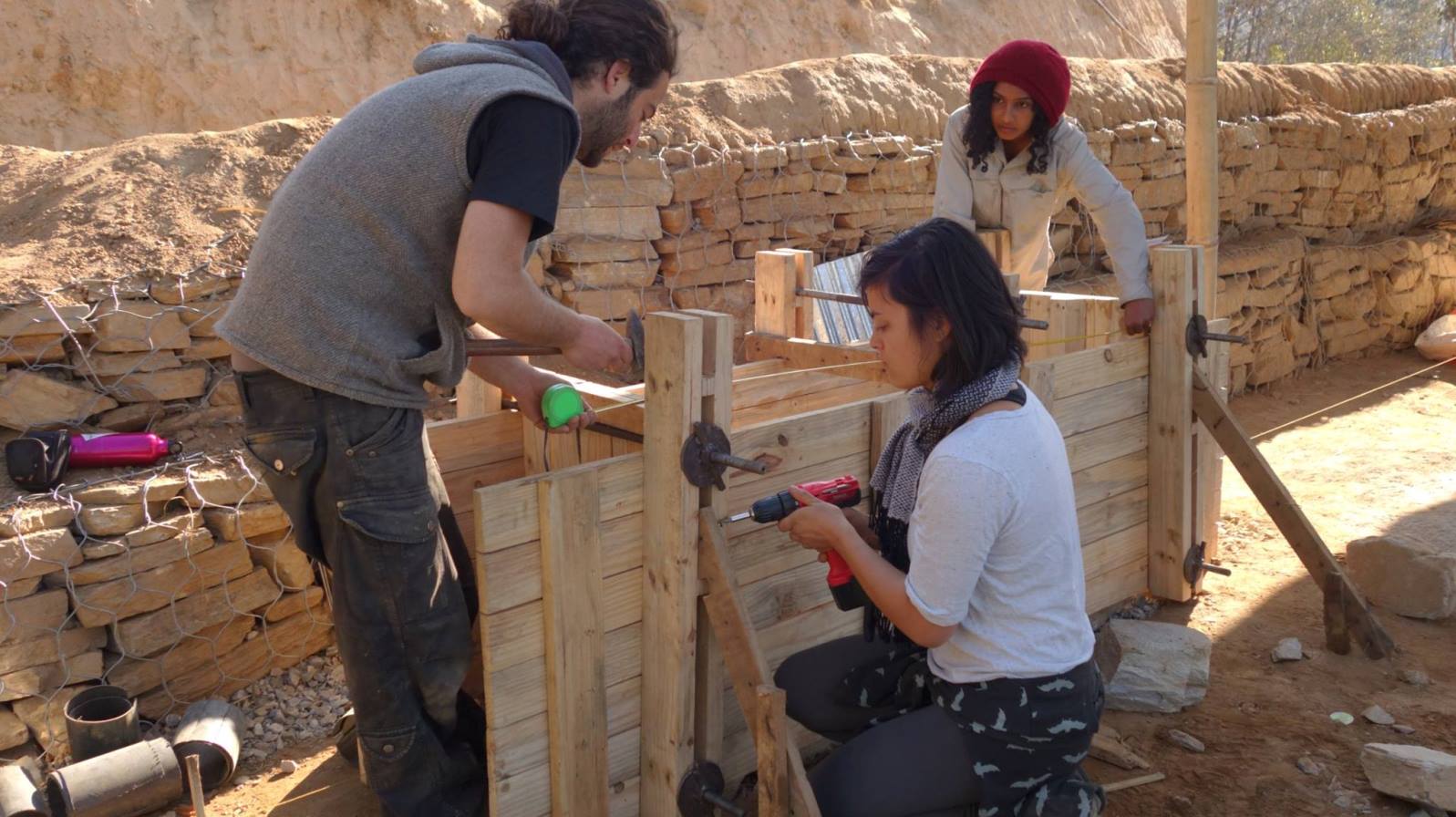
Nitzan Iserovitch of Back to Earth Community, left, teaching Nepali women to build a rammed-earth formwork. Photo via Facebook
This small but growing demand is fueled by the same sensibilities driving the Israeli trend toward vegetarianism and veganism, says Sivan Soffer of Bottz, a natural building materials company in northern Israel.
“People want more natural materials in our bodies, our air and even in our buildings,” Soffer tells ISRAEL21c.
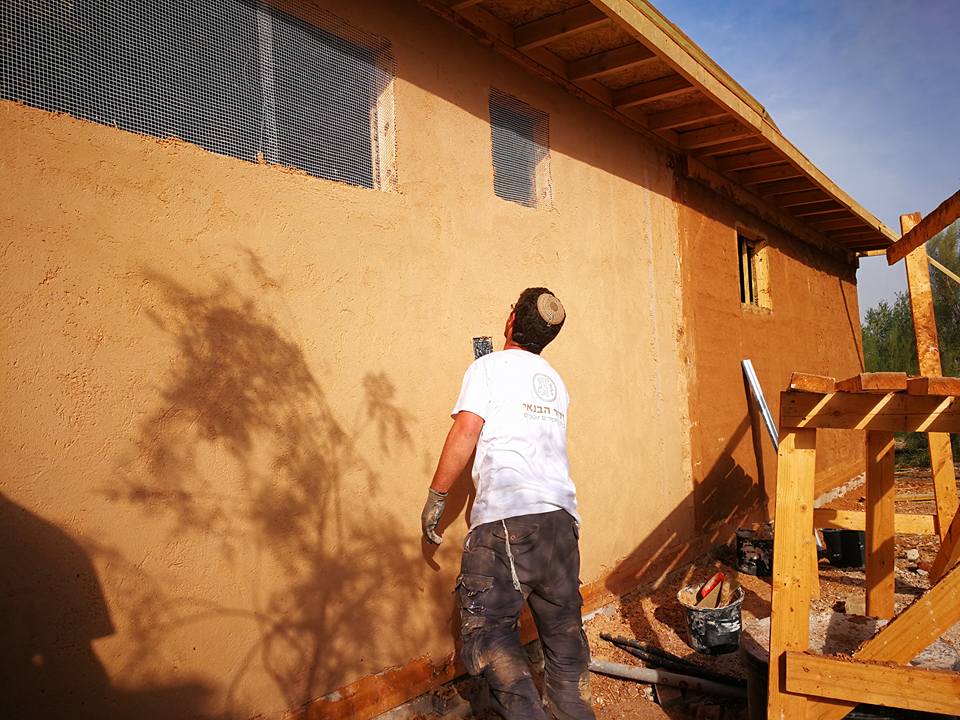
Dror Granevich working on a Back to Earth Community project in the Jordan Valley.
Bottz is Hebrew for “mud” — a traditional natural insulator along with straw bales. Forward-thinking communities such as Kibbutz Lotan and Kibbutz Neot Semadar in the Negev desert have long built with these materials.
As eco-construction moves into suburbia, the most popular natural product for insulation is hempcrete, a weather-resistant composite biomaterial of powdered lime and hemp hurds, the woody inner portion of the hemp stalk.
Due to hemp’s natural properties and the way it’s processed for construction, buildings made with hempcrete take less energy to build, create less waste and consume less fuel compared to concrete houses.
Nir and Dea Ben-Yaacov, who run a home business designing and manufacturing clothing in a fair-trade workshop in Indonesia, worked alongside Bottz professionals to build their eco-house in a Galilee forest.
Finished last July, it has wooden floors and ceilings, exterior lime plaster and interior mud plaster, a wood-burning stove and outer walls insulated with hempcrete.
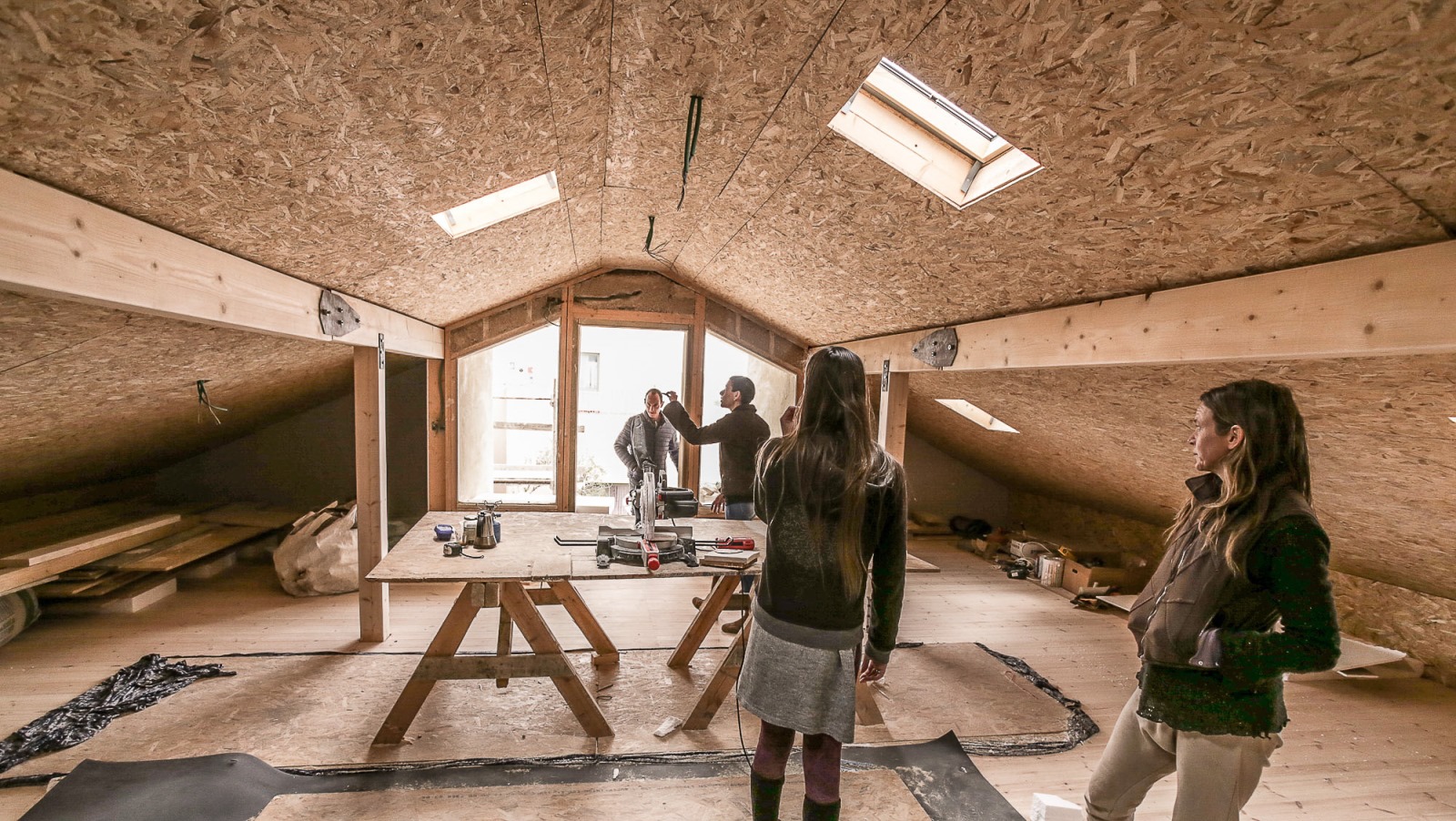
Nir and Dea Ben-Yaacov’s Galilee eco-house under construction in 2017. Photo: courtesy
“We decided if we would build a house we wanted to do it with as little [ecological] footprint as possible,” Dea Ben-Yaacov tells ISRAEL21c. “We built a wooden skeleton and filled it with 32 centimeters of hempcrete. The insulation is amazing! We don’t need air conditioning in the summer and it’s warm in winter.”
Cannabis house
Hempcrete inspired the nickname of the Carmel Mountains “cannabis house” that won the 2017 Israeli Architecture and Design Award for Haifa-based Tav Group eco-architects.

The “cannabis house” has a small ecological footprint. Photo by Yaeli Gabriely courtesy of Tav Group
Local stone and earth, sustainably grown timber, a graywater system, rooftop solar and rainwater-gathering systems, compost toilets and passive heating and cooling systems — including an inner courtyard that acts as a wind chimney – also contribute to the house’s minimal ecological footprint.
Tav recently designed three environmentally friendly houses on a hill in the rural northern village of Yodfat, and is designing another in the Negev desert, all for members of one extended family. They incorporate locally sourced pumice blocks, lime-based plaster and paving stones.
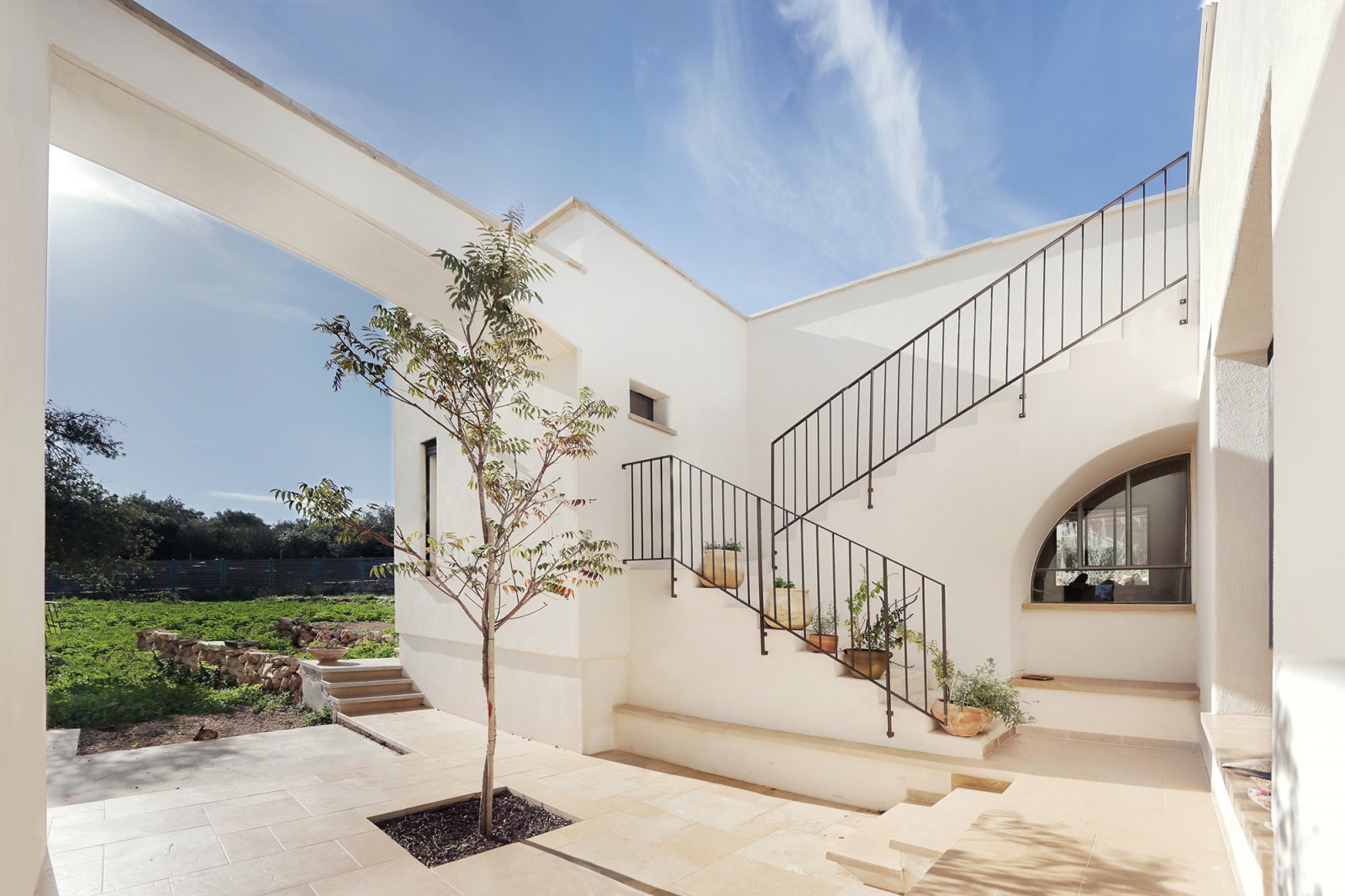
Eco-house in Yodfat. Photo by Yaeli Gabriely courtesy of Tav Group
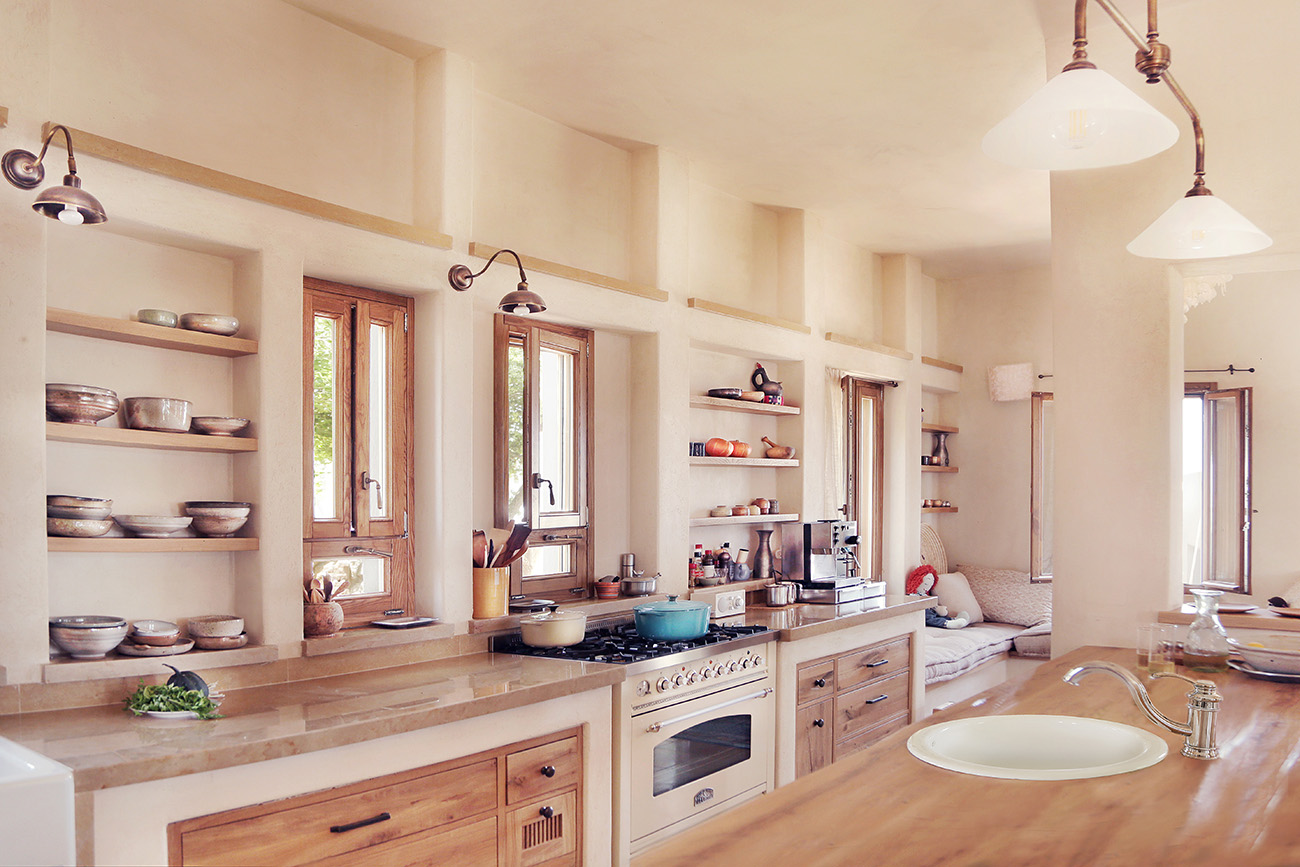 The kitchen of a Tav Group eco-house. Photo by Yaeli Gabriely
The kitchen of a Tav Group eco-house. Photo by Yaeli GabrielyTel Aviv-based Golany Architects designed a house in the Galilee with sliding vertical wooden shutters to let in sunlight while deflecting harsh rays in summer. The shutters, wooden ceiling beams and stone paving slabs were purposely chosen in hues to match the surrounding olive and carob groves.
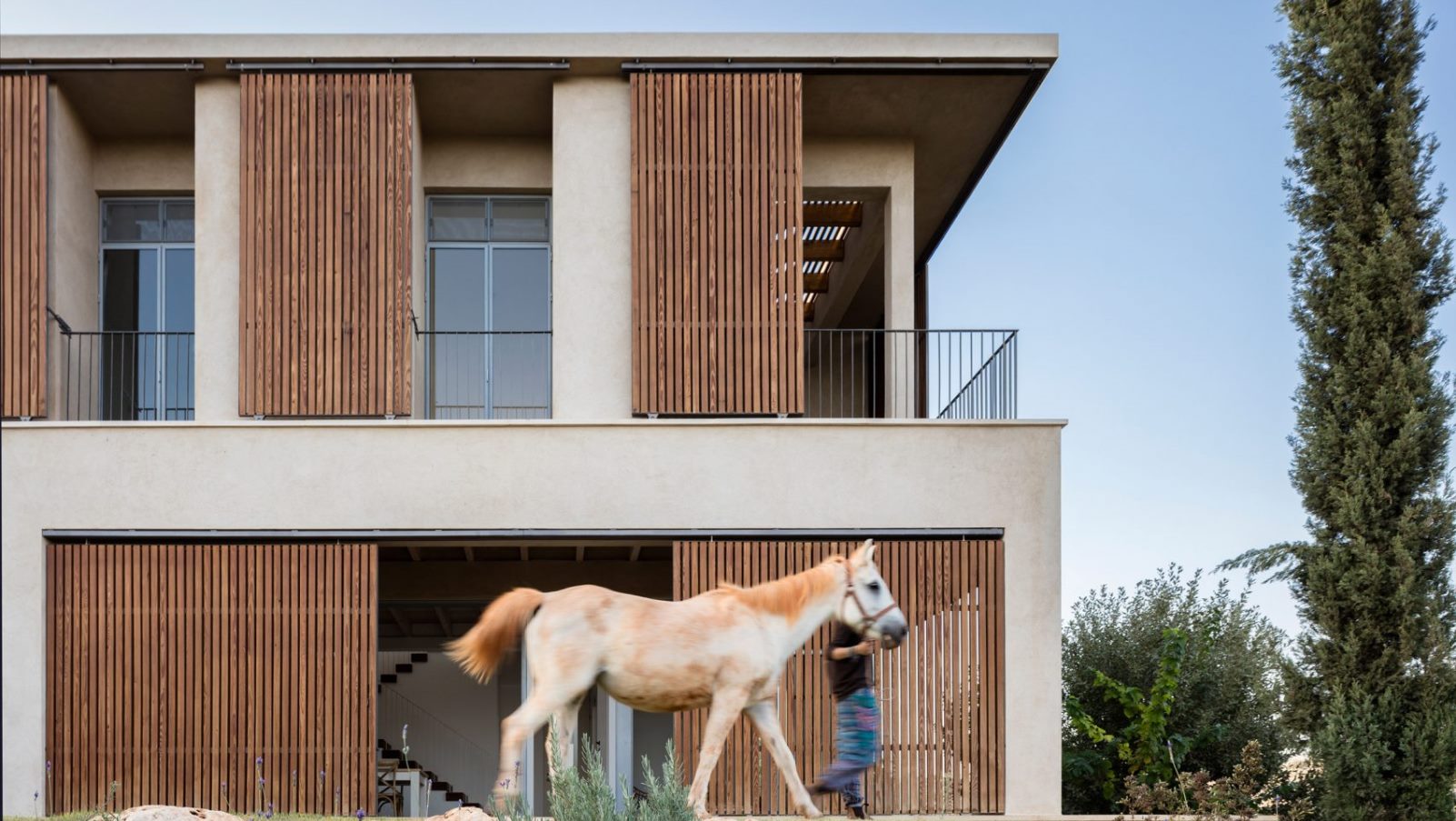
Sliding wooden shutters on a Galilee house designed by Golany Architects. Photo by Amit Geron/Dezeen
Not just for hippies anymore
One of the original Bottz founders, Dana Dweck-Sadeh, today heads an eponymous architecture firm headquartered in the self-built Golan Heights eco-house in which she and her family reside.
Dweck-Sadeh tells ISRAEL21c that more Israeli homeowners are willing to invest in natural materials and building techniques because the resulting house uses less energy and serves them better practically and aesthetically.
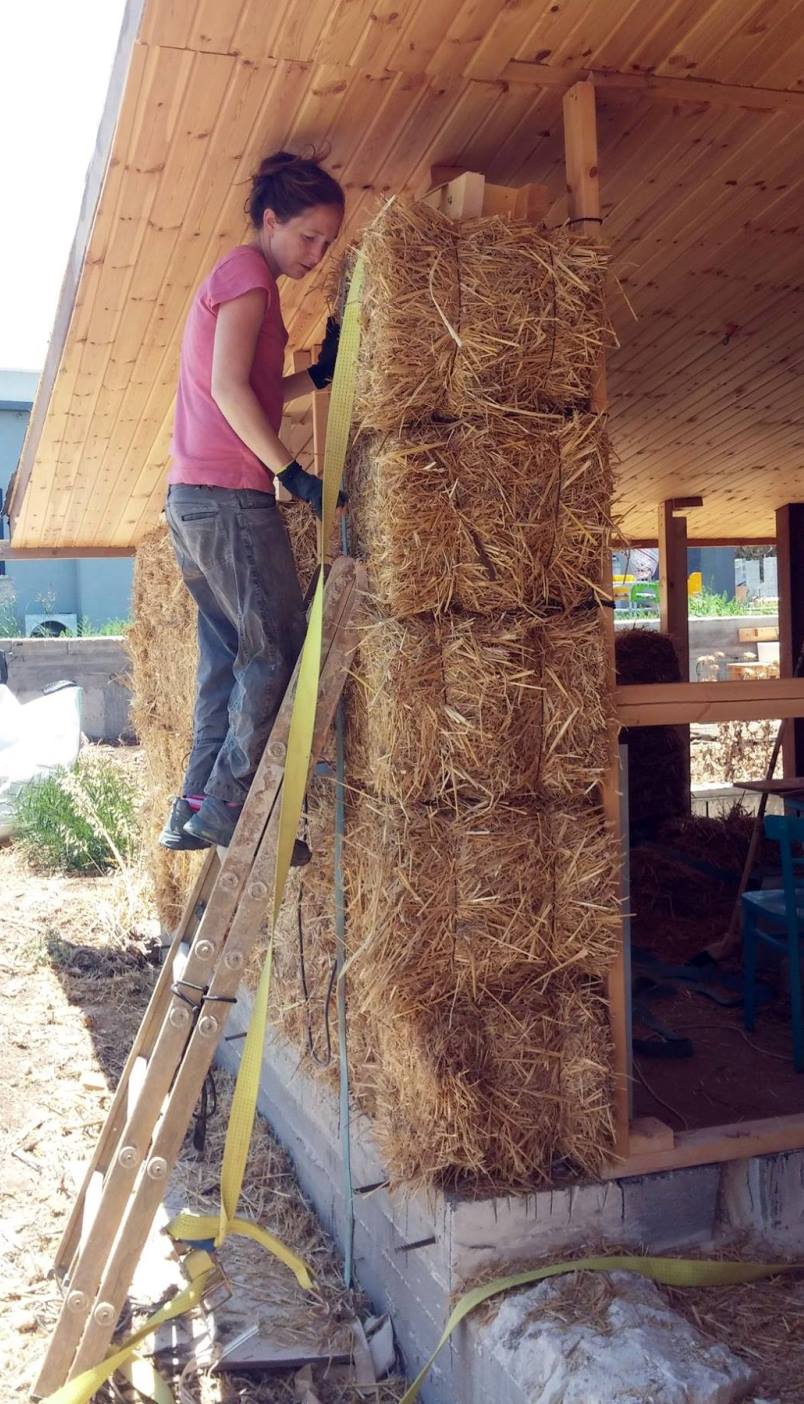
Dana Dweck-Sadeh working on her house made with straw-bale walls. Photo: courtesy
An eco-house costs at least 10 percent more than a conventionally built house due to the price of materials and specialized labor. However, Dweck-Sadeh says the process is becoming more accessible in both price and availability.
“When we started our business 12 years ago it was really for hippie types who wanted to build their own houses,” says Dweck-Sadeh. “These days, we have blocks of hempcrete that allow people to hire a professional contractor who doesn’t have prior experience [with hempcrete]. This will lower the price significantly while keeping all the advantages.”
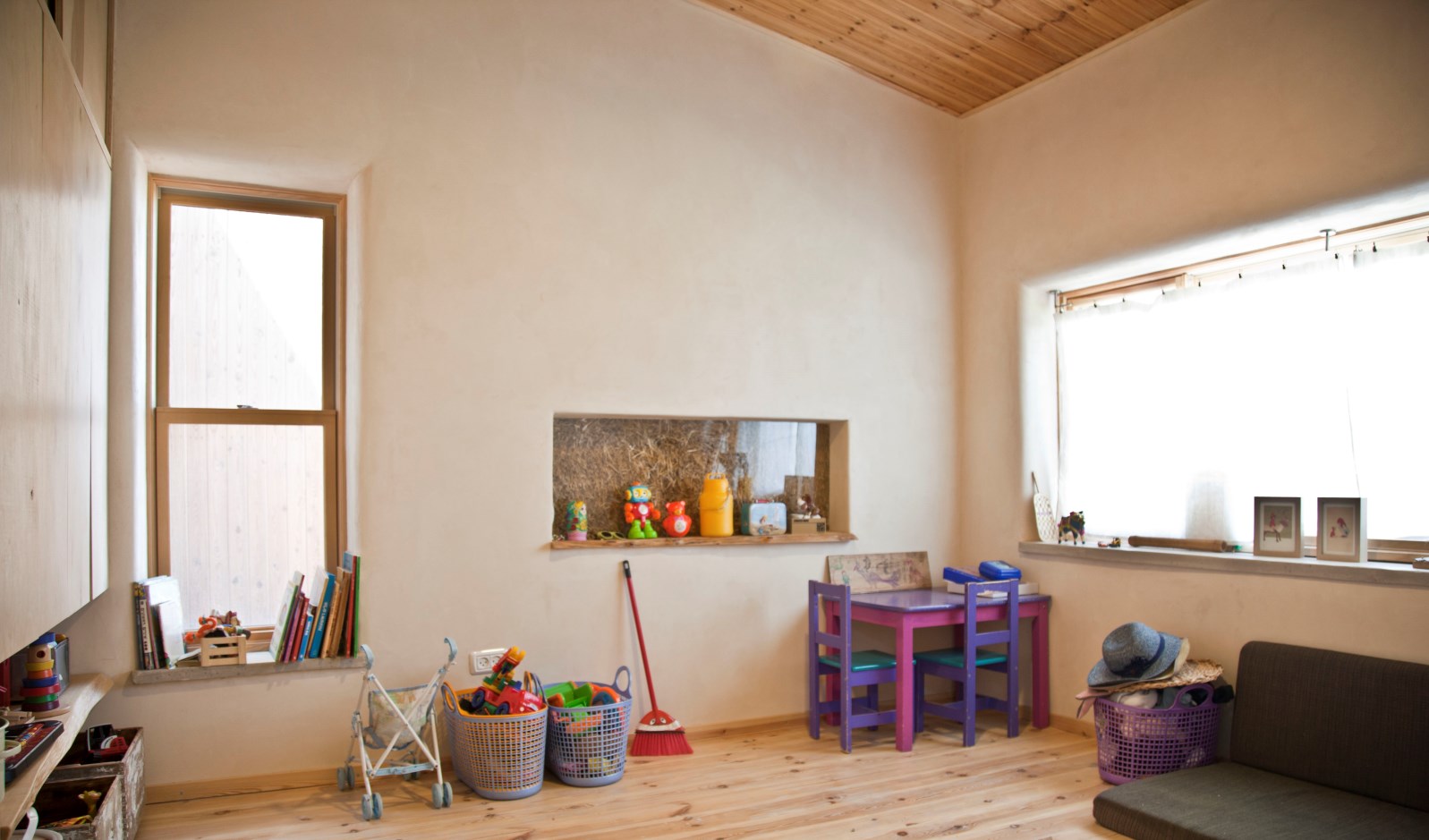
The playroom in Dana Dweck-Sadeh’s eco-house provides a “true window” onto the straw bales insulating its outer walls. Photo: courtesy
“Many materials now considered alternative, like hempcrete, wouldn’t be costly if they come into popular use,” adds Erez. “One of the reasons ecologically built houses cost more is because not enough of them are being built.”
Eco-communities could be one answer to this dilemma.
Ben-Gurion University Prof. Isaac Meir, a pioneer in Israeli green building initiatives, is involved in a European project to design net-zero energy communities where buildings incorporate renewable energy technologies to offset their energy consumption. The Israeli city of Hadera’s new net-zero preschool could be a model for such communities.
Although Israel’s eco-building sector is still small, people in the know say it is quite advanced.
“We have amazing knowledge and very high quality of work,” says Iserovitch, whose next project is a private school in Greece. “All over the world, people are focusing on being good at one thing, like building with straw. Israelis must know how to do everything because the market demands it.”
No comments:
Post a Comment